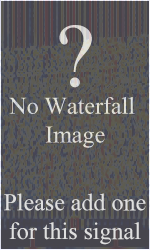Near Instantaneous Companded Audio Multiplex (NICAM)
Near Instantaneous Companded Audio Multiplex (NICAM) is a digital encoding of stereo audio originally used for studio to studio links in the 1970s. From the early 1980s, NICAM was rolled out to public PAL Broadcast television for the first time in Europe, which went by the name NICAM 728.
The source audio is compressed using 14 bit pulse-code modulation at a sampling rate of 32 kHzKiloHertz (kHz) 10^3 Hz. The bitstream is then transmitted over the air at 728 kbit/sKilobits per second (kbps) using DQPSKDifferential Quadrature Phase-Shift Keying RFRadio Frequency modulation.
As of 2023, some countries that have not shut down analogue television broadcasts still utilise NICAM to deliver stereo audio. The signal itself can be found next to the analogue WFMWideband Frequency Modulation audio carrier.
NICAM currently offers the following possibilities, autoselected by the inclusion of a 3-bit type field in the data-stream:
• One digital stereo sound channel. • Two completely different digital mono sound channels. • One digital mono sound channel and a 352Kbit/sec data channel. • One 704Kbit/sec data channel
Additional Links[edit]
- NICAM Wikipedia Page
- ETSI Technical Specifications
- "All You Ever Wanted to Know About NICAM but were Afraid to Ask"

